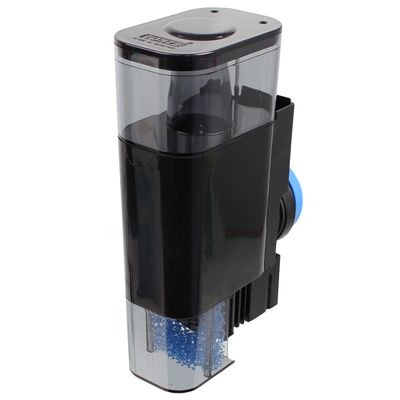- Joined
- Feb 4, 2016
- Messages
- 532
- Reaction score
- 357
Hey all- my 6g Fluval Edge nano has been rocking and rolling - corals and fish doing great at 7 months old, and really starting to look like a little reef.
But recently, I've had some pretty annoying and unsightly green hair algae, as well as a ton of coraline building up on the glass.
I had a free morning and decided to do some pretty heavy-duty tank cleaning to remove the coraline and brush/pick off some hair algae. Because of the design/shape of the tank, this required me taking out some live-rock and corals to get to the hard-to reach places. While I was doing this, I also took the time to do some sand-stirring/cleaning as well - which is the first time I've done this in 7 months.
All this followed by a good filter-cleaning and huge water change.
Now - understandably - the tank looks pretty cloudy, and the corals are super p*ssed off.
This is my first tank and I'm learning as I go...and I know I'm probably getting worked up for nothing... but did I make a major misstep by doing such a heavy cleaning?
Give me some reassurance that it'll all be OK in the morning when things have time to adjust!
But recently, I've had some pretty annoying and unsightly green hair algae, as well as a ton of coraline building up on the glass.
I had a free morning and decided to do some pretty heavy-duty tank cleaning to remove the coraline and brush/pick off some hair algae. Because of the design/shape of the tank, this required me taking out some live-rock and corals to get to the hard-to reach places. While I was doing this, I also took the time to do some sand-stirring/cleaning as well - which is the first time I've done this in 7 months.
All this followed by a good filter-cleaning and huge water change.
Now - understandably - the tank looks pretty cloudy, and the corals are super p*ssed off.
This is my first tank and I'm learning as I go...and I know I'm probably getting worked up for nothing... but did I make a major misstep by doing such a heavy cleaning?
Give me some reassurance that it'll all be OK in the morning when things have time to adjust!
















